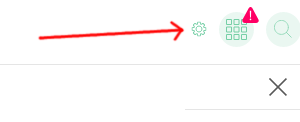This bot enables you to use curl, wget or any other HTTP client to post messages to matrix.org channels, without specifying credentials, logging in or joining rooms manually. You can use it to write scripts that publish important information, like service restarts, new mails, ….
The easiest way to install the bot (or just try it out) is via Docker. Just pull the docker image via
docker run --tty --detach --volume ./docs:/etc/matrix-bot:ro --publish 1339:1339 plapadoo/matrix-bot
This will pull the official image from Docker Hub and start the container, thus starting the bot. Because the bot needs to log in to matrix, you need to specify a server, a login name and a password. This cannot be done from the command line at the moment – you need a config file. The repository contains a sample config file in the docs/ directory.
The bot will immediately try to log in to matrix and tell you if that worked.
The sample config file makes the bot listen on port 1339 and the command line above publishes this port to 1339 on the host.
Assuming you have compiled the bot yourself, you’re left with a single executable file: matrix-bot-exe. Without command line arguments, the bot assumes that there’s a configuration file in /etc/matrix-bot/matrix-bot.dhall, though you can override this using --config-file on the command line.
The easiest way to compile the bot or the docker image from source is to use the nix package manager. With it, you can build the bot using
nix-build
The resulting files will be located in the result/ directory. To build the Docker image, use
nix-build dockerimage.nix
This will, at the last line, output a path that you can feed into docker load.
The bot can be compiled using cabal-install by using cabal install --only-dependencies and then cabal install.
The bot has just a single configuration file, which is written in the dhall configuration language. The format should be self-explanatory. Check out docs/matrix-bot.dhall for a sample configuration.
In the configuration file, you specify a user name and password. This is the account the bot is linked to. It can be your own account, or one specially created for the bot. The bot will post messages using this user’s name. It can only send messages to rooms it’s invited to (it will join these rooms automatically, though).
The bot listens on a HTTP port (1339 by default). The path specifies the internal room number of the room you want to post to. You can query the internal room number by pressing the gear icon on the top left in a room and then scrolling all the way down.
The matrix.org protocol lets you specify both a plain text version of a message and a “rich text” version (e.g. something containing HTML). With the bot, you can specify both (or just one of them), as such:
If the body of the HTTP request starts with <body>, what follows is the HTML encoded message (until the closing </body>). Directly after that is the plain-text version of the message. Both plain-text and HTML can be omitted.
For example, this snippet:
curl -d 'hi!' 'http://localhost:1339/!PEzdwmhuVvTZeSHPIa:chat.mycompany.com'
Will post hi! to the channel with the internal ID !PEzdwmhuVvTZeSHPIa:chat.mycompany.com.
This snippet:
curl -d '<body><em>hi</em>!</body>hi!' 'http://localhost:1339/!PEzdwmhuVvTZeSHPIa:chat.mycompany.com'
Does the same, but adds a HTML version of the text, with an emphasis.
The bot will output success if everything worked, otherwise it’ll output an error message (and return an error code).

